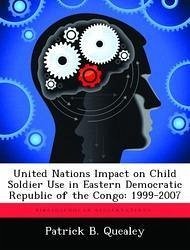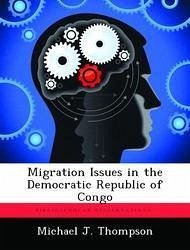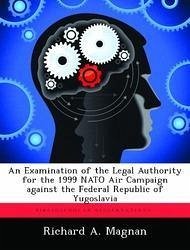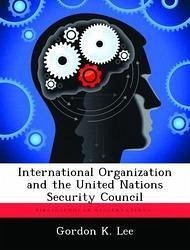Nicht lieferbar

United Nations Impact on Child Soldier Use in Eastern Democratic Republic of the Congo: 1999-2007
Versandkostenfrei!
Nicht lieferbar
The underlying assumption and perhaps bias of this paper is that the innocence of childhood is worthy of preservation and protection regardless of cultural or socio-economic conditions. The framework of international and national legal statutes and conventions entrenches this assertion and defines the status of children. This is a case study of the use of child soldiers in the Democratic Republic of the Congo (DRC), one of the world's richest nations from the perspective of natural resources, and yet poorest from the perspective of the conditions in which the majority of its population lives. ...
The underlying assumption and perhaps bias of this paper is that the innocence of childhood is worthy of preservation and protection regardless of cultural or socio-economic conditions. The framework of international and national legal statutes and conventions entrenches this assertion and defines the status of children. This is a case study of the use of child soldiers in the Democratic Republic of the Congo (DRC), one of the world's richest nations from the perspective of natural resources, and yet poorest from the perspective of the conditions in which the majority of its population lives. As an international organization responsible for the preservation of the Rights of the Child, the United Nations has taken action to change this situation through the United Nations Organization Mission in the DRC (MONUC). This paper assesses MONUC's effectiveness between 1999 and 2007 in addressing the root and enabling factors contributing to the use of child soldiers in eastern DRC. Using these factors to measure effectiveness, it concludes that while the UN has made concerted efforts to stem the use of child soldiers, it has been only partially effective. This is due largely to the complexity of conflict in eastern DRC and the critical capability that child soldiers provide warring factions in generating viable combat power and the limited resources that MONUC had available to achieve a very broad mission. This work has been selected by scholars as being culturally important, and is part of the knowledge base of civilization as we know it. This work was reproduced from the original artifact, and remains as true to the original work as possible. Therefore, you will see the original copyright references, library stamps (as most of these works have been housed in our most important libraries around the world), and other notations in the work. This work is in the public domain in the United States of America, and possibly other nations. Within the United States, you may freely copy and distribute this work, as no entity (individual or corporate) has a copyright on the body of the work. As a reproduction of a historical artifact, this work may contain missing or blurred pages, poor pictures, errant marks, etc. Scholars believe, and we concur, that this work is important enough to be preserved, reproduced, and made generally available to the public. We appreciate your support of the preservation process, and thank you for being an important part of keeping this knowledge alive and relevant.










